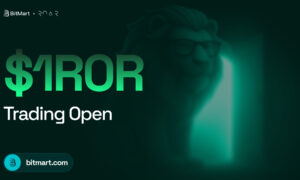Entrepreneur Rocky Shi supports the latest innovations in digital art through his startup company, Rise Entertainment, a connection hub for visual effects and digital artists, animators, and other creative types. The founder and CEO of Rise, Rocky Shi is also an artist in his own right with a BFA from New York University’s Tisch School of the Arts.
Additionally, Rocky Shi cultivates interests in cryptocurrency, smart contracts, non-fungible tokens (NFTs), global markets, and more, including the trending phenomenon known as digital art.
Defining Digital Art
Rocky Shi explains that digital art is an intersection of talent and technology where artists employ computers, software, and other tools to create visually stunning drawings, paintings, photographs, and 2- and 3-D images. Digital art goes into yet another realm when an artist converts it into an NFT. Unlike traditional art, though, NFT digital art exists solely in cyberspace.
As long as the creation is solely their own work, artists can register, or mint, their NFT digital art on a digital database called a blockchain. In a digital marketplace such as Ethereum—an open-source blockchain computing platform (as well as a cryptocurrency second only to Bitcoin)—anyone with access to cryptocurrency can purchase and own their own piece of NFT digital art. The worth of that digital creative work, as with all other NFT digital art, is assigned by all those who currently hold cryptocurrency.
NFTs Add Virtual Value
Rocky Shi says artists appreciate the strength and simplicity of blockchain technology, which builds an impressive provenance and proof of ownership while enabling NFT digital art to be shared or consumed yet thwarts any attempts at duplication or forgery. The technology frees artists to exhibit and sell their work without the hassle and expense of hiring attorneys to protect their intellectual property through copyrights and trademarks, because certificates of ownership are literally built in to NFTs. Even the process of getting paid becomes easier, as the blockchain platform dutifully credits the requisite royalty to the artist upon each sale of NFT digital art, no matter how fractional the transaction.
Three years before the term NFT was in use, an animation was registered in 2014 with a similar certificate of ownership. But the “big bang” moment heralding the arrival of the NFT digital art concept came in the guise of Pascal Boyart, a French street artist who in 2019 painted a mural featuring an interpretation of a Eugene Delacroix masterpiece. Boyart then photographed the mural and minted it for sale as NFT digital art.
Painting a New Canvas
According to Rocky Shi, some futurists believe that applying NFTs to digital art will revolutionize the market, changing everything from the transactional process to opinions on what kind of art—and what kind of artists—are considered most valuable. For example, an NFT digital artwork by a graphic designer/animator named Beeple—unknown in the art world—had an opening bid of $100 at a Christie’s auction and ultimately sold for $69 million, thanks to energetic bidding by cryptocurrency entrepreneurs. And with NFT digital art, don’t worry if you can’t afford it—the financial nature of the NFT enables you to be one of hundreds or thousands who buy fractions of a single work.
As artists, collectors, and investors gather online to register, buy, and sell NFT digital art, Rocky Shi believes others will continue to watch with interest, curious to see if these virtual works will prove to be as timeless (and priceless) as the Mona Lisa.



































